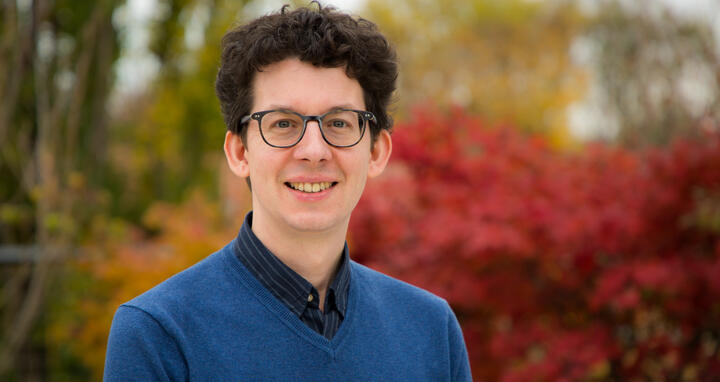Jan Philipp Junker receives Helmholtz AI grant
Scientists generally understand how stem cells transform into a specialized heart, brain or muscle cell. But now they want more specifics: the precise, step-by-step instructions that drive cell fate and function. Understanding the exact flow of genes turning on or off other genes, called “gene regulatory networks,” throughout the normal cell differentiation process could also help clarify what goes wrong in diseases such as cancer and heart disease.
Researchers at the Max Delbrück Center for Molecular Medicine in the Helmholtz Association (MDC) and Helmholtz Center Munich will use a Helmholtz Artificial Intelligence Grant to try to decode these complex networks by combining advanced experimental, sequencing and machine learning tools. “Suddenly, with recent technological developments, this goal that seemed to be almost unreachable, is within reach,” says Dr. Jan Philipp Junker, who heads the Quantitative Developmental Biology Lab at MDC’s Berlin Institute for Medical Systems Biology.
Ambitious collaboration
The Helmholtz AI Grant program supports “high-risk, high-reward” research over a relatively short timeframe of three years, encouraging investigators to try out novel ideas and “fail fast” if need be and continue innovating. “This doesn’t mean this should be completely reckless research and that we are ready to burn the money entirely,” Junker says. “It’s a calculated risk.”
The €200,000 grant will be shared equally by Junker and his collaborator, Dr. Maria Colomé-Tatché, a group leader at the Institute of Computational Biology at Helmholtz Center Munich, to support a post doc and a Ph.D. student conducting experiments, developing computational tools and analyzing data. The two centers are required to provide matching funds.
Really big data
Understanding which gene turns on which other genes, how these activation networks work in different cell types, that is still basically an open question.
With the recent advent of single-cell sequencing, scientists are able to see which genes are active in individual cells as they progress from undifferentiated cells into specific cell types, such as a muscle cell or brain cell. But so far, computational tools have not successfully pieced together how genes specifically influence each other.
“In principle, we can see what happens, what genes go on and what genes go off as a cell differentiates, but understanding which gene turns on which other genes, how these activation networks work in different cell types, that is still basically an open question,” Junker explains. Attacking this question requires colossal amounts of data – sequencing tens of thousands of active genes, in tens of thousands of individual cells. One data set includes at least 20,000 dimensions. That’s where AI and machine learning can help, sifting through all that data and finding meaningful patterns, which in this case, are the gene regulatory networks.
It also requires aligning the time scales of multiple data streams so they can be effectively analyzed and yield accurate insights. The team is working to improve this alignment. Notably, they have adapted a method called SLAM-seq to label freshly transcribed RNA molecules, which indicate newly activated genes. Identifying old RNA present in a cell versus new RNA will help clarify the order of gene activations. Combining this information with data on DNA accessibility should help make network reconstructions more accurate.
Future applications
Junker and his team will initially seek to reconstruct gene networks in normal embryonic development of zebrafish, a model organism for vertebrates, including humans. Once the computational approach is verified, they can use it to study disease development in humans, which can open doors to new treatments.
“In the more distant future,” Junker says, “when we have a complete network for cell differentiation for an organ, then we could go to the drawing board and decide which arrow or node we want to attack with a therapy.”
Text: Laura Petersen
Further information
Pictures to download
Junker with zebra fish. Bild: Pablo Castagnola/MDC
Contacts
Dr. Jan Philipp Junker
Head of the “Quantitative Developmental Biology” Lab
Berlin Institute for Medical Systems Biology (BIMSB)
at the Max Delbrück Center for Molecular Medicine in the Helmholtz Association (MDC)
+49 (0)30 9406 1860
JanPhilipp.Junker@mdc-berlin.de
Christina Anders
Editor, Communications Department
Max Delbrück Center for Molecular Medicine in the Helmholtz Association (MDC)
+49 (0)30 9406 2118
christina.anders@mdc-berlin.de or presse@mdc-berlin.de
The Max Delbrück Center for Molecular Medicine (MDC)
The Max Delbrück Center for Molecular Medicine in the Helmholtz Association (MDC) is one of the world’s leading biomedical research institutions. Max Delbrück, a Berlin native, was a Nobel laureate and one of the founders of molecular biology. At the MDC’s locations in Berlin-Buch and Mitte, researchers from some 60 countries analyze the human system – investigating the biological foundations of life from its most elementary building blocks to systems-wide mechanisms. By understanding what regulates or disrupts the dynamic equilibrium in a cell, an organ, or the entire body, we can prevent diseases, diagnose them earlier, and stop their progression with tailored therapies. Patients should benefit as soon as possible from basic research discoveries. The MDC therefore supports spin-off creation and participates in collaborative networks. It works in close partnership with Charité – Universitätsmedizin Berlin in the jointly run Experimental and Clinical Research Center (ECRC), the Berlin Institute of Health (BIH) at Charité, and the German Center for Cardiovascular Research (DZHK). Founded in 1992, the MDC today employs 1,600 people and is funded 90 percent by the German federal government and 10 percent by the State of Berlin.





